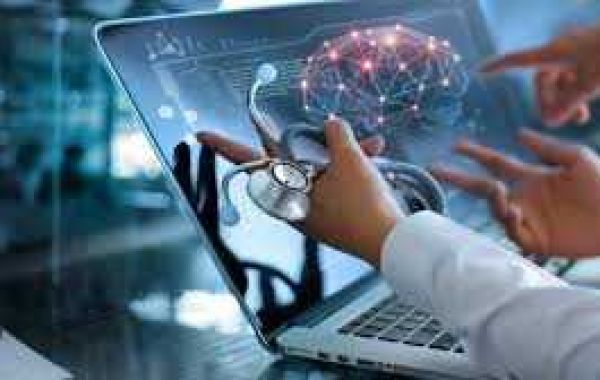Healthcare app development has significantly contributed to the evolution of telemedicine, bridging the gap between patients and healthcare providers. These apps enable real-time consultations, remote monitoring, prescription management, and a host of other features that contribute to better patient care. As telemedicine becomes more integrated into everyday healthcare practices, the future looks bright, with continuous improvements on the horizon.
The Rise of Telemedicine and the Role of Healthcare Apps
Telemedicine, once a niche service, has now become a crucial aspect of healthcare, especially in remote areas where access to doctors is limited. The COVID-19 pandemic accelerated the adoption of telemedicine as social distancing measures necessitated virtual consultations. With an increase in virtual appointments, healthcare providers needed efficient platforms to communicate with patients effectively. This is where healthcare app development came into play.
Healthcare apps for telemedicine allow patients to access healthcare professionals through video calls, chat, and even voice consultations, all through their smartphones or computers. These apps have simplified the process of booking appointments, filling prescriptions, tracking medical records, and even offering follow-up care. Moreover, they enable healthcare providers to offer care to patients in locations where they may otherwise struggle to access medical resources.
Key Features of Healthcare Apps Shaping Telemedicine
The capabilities of healthcare apps are broad, making telemedicine services more accessible and user-friendly. These key features include:
Video Conferencing: Telemedicine's most significant advancement has been enabling video consultations. Healthcare apps provide high-quality video calling, ensuring that patients and doctors can communicate effectively as if they were face-to-face. This feature is particularly vital in offering medical consultations in real-time, especially for non-emergency situations where patients may need expert guidance.
Remote Patient Monitoring: Healthcare apps can also facilitate the remote monitoring of patients’ vital signs, such as heart rate, blood pressure, and glucose levels. Patients can use wearable devices or other health monitoring tools, which then sync with the healthcare app to share their data with doctors. This allows healthcare providers to make informed decisions and ensure that the patient’s condition is being managed effectively, all while reducing in-person visits.
Appointment Scheduling and Management: Telemedicine apps often come with integrated scheduling features, allowing patients to book, reschedule, or cancel appointments with ease. These apps notify patients and healthcare providers of upcoming appointments and provide reminders, ensuring smooth coordination between both parties.
Secure Messaging and Document Sharing: Healthcare apps also support secure messaging between patients and doctors, ensuring confidentiality and privacy. Patients can ask questions, discuss symptoms, and receive guidance without worrying about information breaches. Apps also allow the sharing of documents such as test results, prescriptions, and referrals, enhancing the collaborative care experience.
Prescription Management: Healthcare apps streamline the prescription process by allowing doctors to send prescriptions electronically, reducing the likelihood of errors or delays. Patients can then use these prescriptions directly at pharmacies without the need for a physical paper prescription.
Integration with Electronic Health Records (EHR): Modern healthcare apps integrate with EHR systems, providing doctors with a comprehensive view of a patient’s medical history. This integration enables more accurate diagnoses and treatment plans, as healthcare providers can access up-to-date information regarding their patients' health conditions, previous treatments, and allergies.
AI-Powered Diagnostics: Some healthcare apps are incorporating artificial intelligence (AI) to assist in diagnostics. AI algorithms analyze patients' symptoms and suggest potential conditions, guiding healthcare professionals toward quicker and more accurate diagnoses.
Benefits of Healthcare Apps for Telemedicine
The integration of healthcare app development into telemedicine offers numerous benefits, not only for patients but also for healthcare providers and the entire healthcare system.
Improved Access to Healthcare: Healthcare apps break down geographical barriers, providing access to medical professionals for patients in remote or underserved locations. With a stable internet connection, patients can consult with specialists and receive expert care from anywhere.
Cost Efficiency: Telemedicine through healthcare apps reduces the need for in-person visits, which can be expensive due to travel costs, facility fees, and longer wait times. Virtual consultations are often more affordable, making healthcare more accessible to people from all economic backgrounds.
Enhanced Patient Satisfaction: Healthcare apps allow patients to receive care in the comfort of their own homes, improving their overall experience. The convenience of booking appointments at their convenience, along with the flexibility of remote consultations, helps boost patient satisfaction.
Reduced Healthcare Overload: Telemedicine, powered by healthcare apps, helps to reduce the strain on healthcare facilities, particularly in times of high demand such as flu seasons or pandemics. Patients with non-urgent concerns can access care remotely, allowing in-person medical resources to focus on critical cases.
24/7 Availability: Many healthcare apps offer access to medical professionals around the clock, which is especially valuable for those in need of urgent care but not necessarily requiring emergency room services. This ensures that patients can get advice at any time, without waiting for regular office hours.
The Future of Healthcare App Development and Telemedicine
As healthcare app development continues to evolve, the future of telemedicine looks even more promising. Several trends are expected to shape the future of this technology, including:
Increased Use of Artificial Intelligence: AI will play an even bigger role in telemedicine by enhancing diagnostics, personalizing treatment plans, and providing better predictive healthcare. AI algorithms can analyze large volumes of patient data, making healthcare more proactive than reactive.
Better Integration with Health Devices: The future will see greater integration between healthcare apps and wearable devices such as smartwatches, fitness trackers, and glucose monitors. This will provide healthcare providers with a more comprehensive understanding of a patient’s health, leading to more tailored care.
Augmented Reality (AR) and Virtual Reality (VR): The integration of AR and VR in telemedicine apps could revolutionize remote consultations by allowing doctors to virtually examine patients, providing a more immersive and accurate evaluation. These technologies could also enhance medical training and support surgical planning.
Blockchain for Data Security: With concerns around data privacy, blockchain technology could be used in healthcare apps to secure patient data and ensure that it remains tamper-proof. Blockchain provides transparent and secure transaction systems, ideal for maintaining confidentiality in the medical field.
Conclusion
Healthcare app development is undeniably shaping the future of telemedicine, making healthcare more accessible, efficient, and patient-friendly. As technology continues to evolve, telemedicine will become an even more integral part of the healthcare system, providing greater convenience for patients and healthcare professionals alike. The combination of innovative features and cutting-edge technologies promises to revolutionize healthcare, making it more connected and smarter than ever before.









Shane Corn 17 w
Thanks for reading our blog.Healthcare app development is revolutionizing telemedicine by enabling remote consultations, real-time monitoring, and secure data sharing. Dev Technosys specializes in creating innovative healthcare apps, ensuring efficient solutions that enhance patient care and improve overall healthcare accessibility.
Read More: https://devtechnosys.com/healthcare-app-development.php